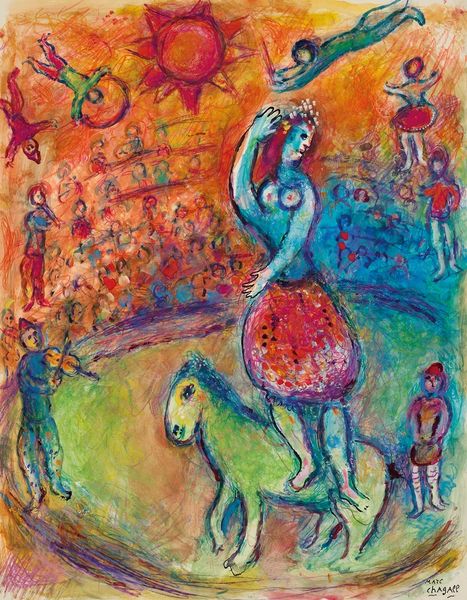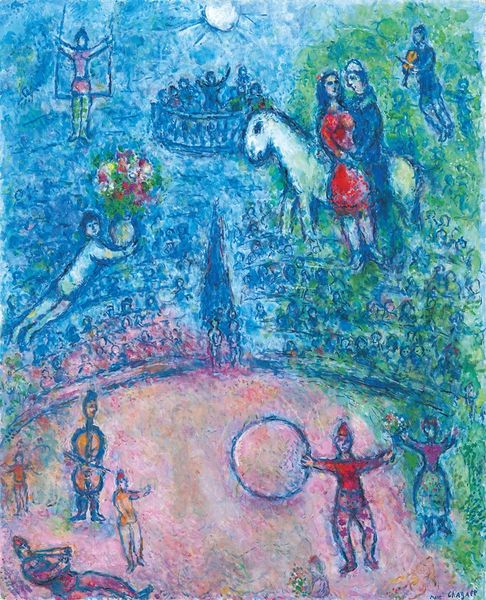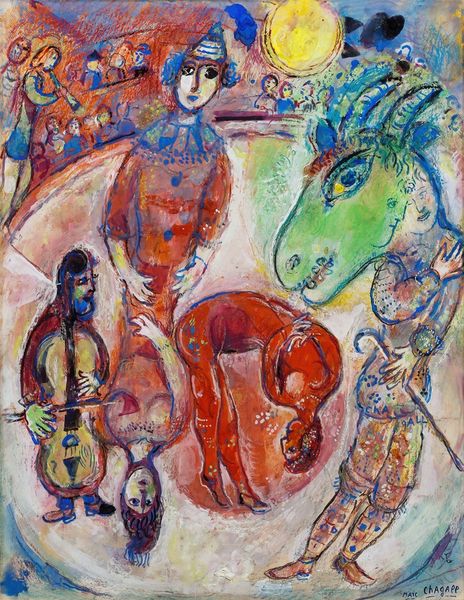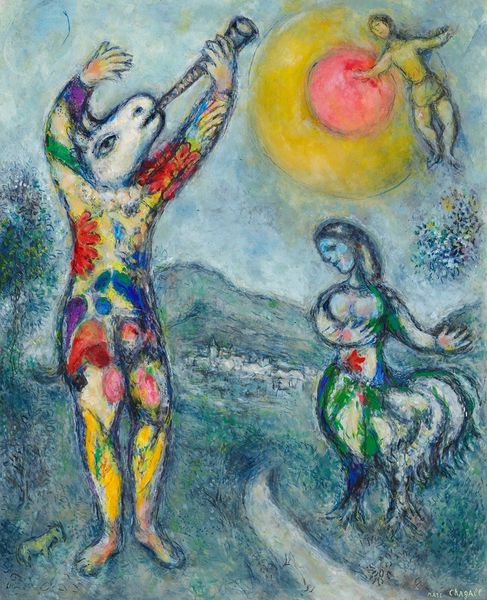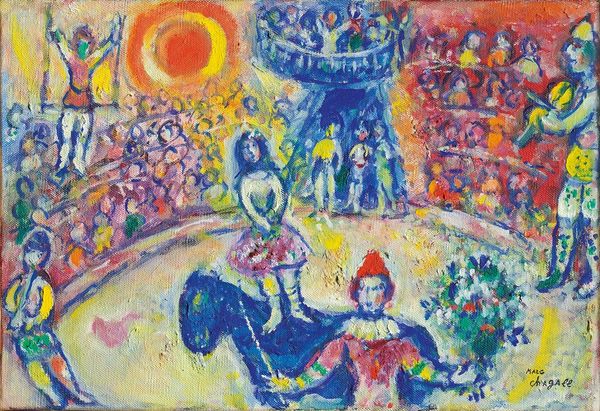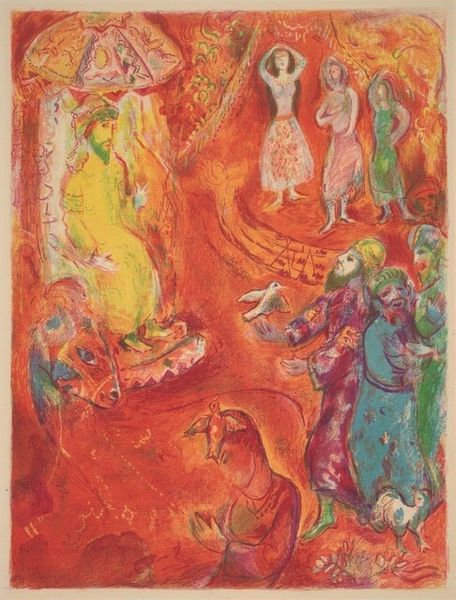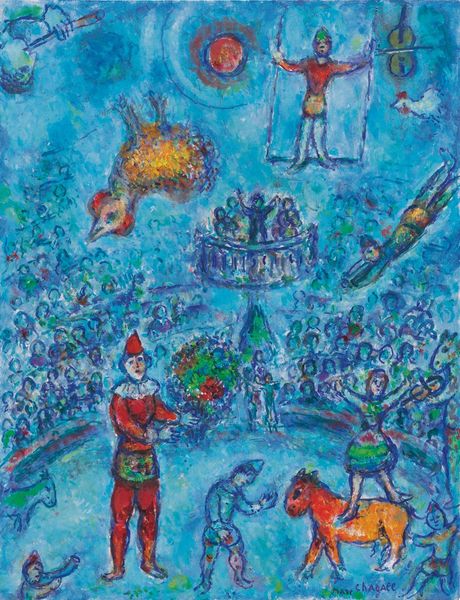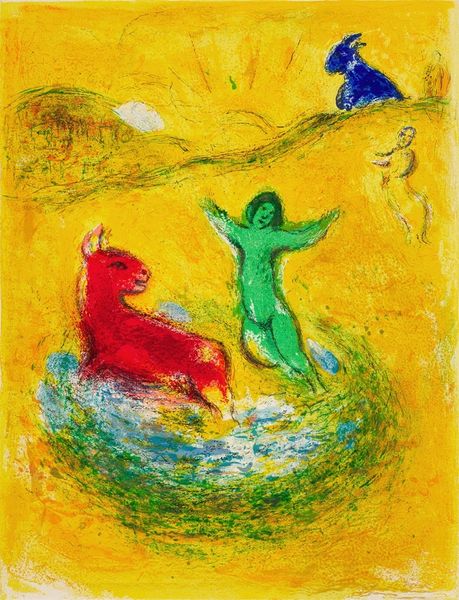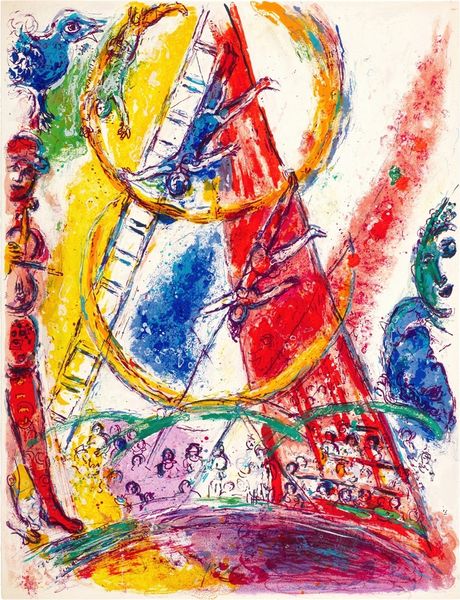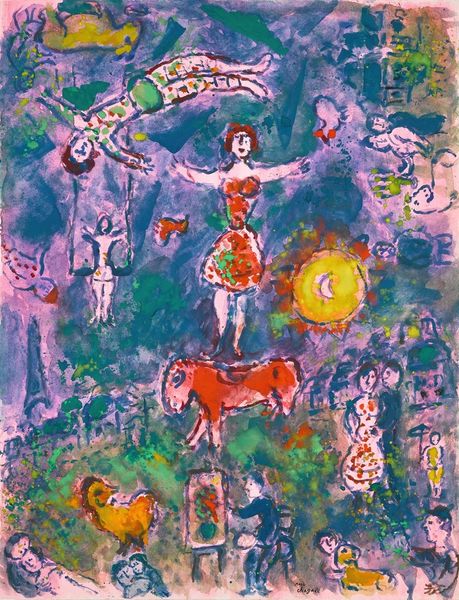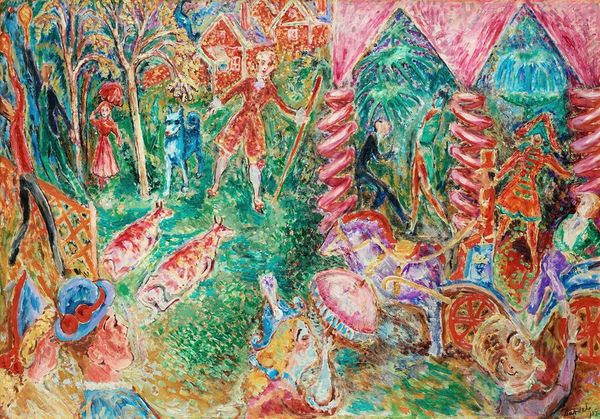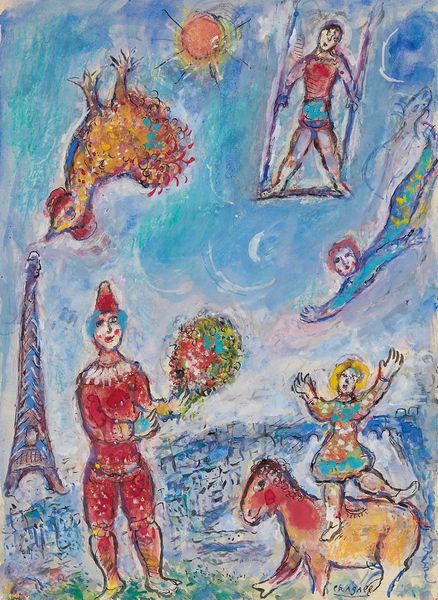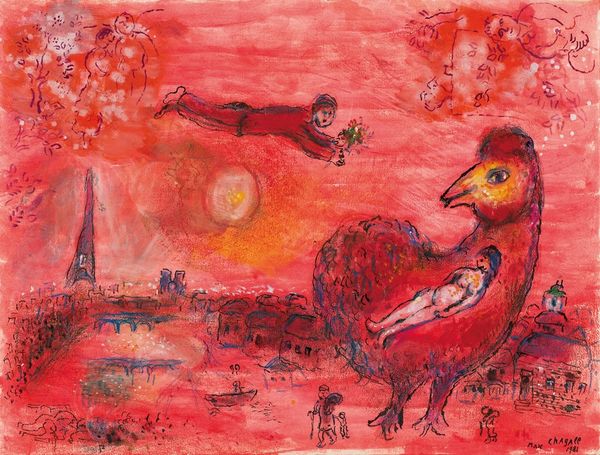
Copyright: Modern Artists: Artvee
Curator: Marc Chagall's 1970 "Scène de Cirque," rendered with acrylic paint, assaults us with its overwhelmingly red atmosphere. A naive, expressionistic piece in a landscape style, one can immediately sense the influence of modernism at play. Editor: It's joyous, almost frantic! The figures seem to float on the canvas, detached from gravity, imbued with an unmistakable lightness of being, almost like dream figures… Curator: Exactly! This harkens back to the deeper symbology embedded within Chagall’s circus themes. The circus performers, the animals… they act as metaphors. They have featured heavily within art history representing the human condition and society. Chagall certainly explores his themes of displacement, love and identity in them. Editor: That's interesting; in this composition, the iconography isn't overt. There’s that central figure standing on the chicken, but that is so surreal. I find that Chagall is often playful but doesn't have the dark undercurrents we find in someone like Picasso or Beckmann. Curator: Precisely, the figures are recurring characters. The circus theme itself is not merely entertainment. But it mirrors the world, where balance and precariousness exist side by side. Look closely, notice how the figures repeat gestures and expressions from Jewish folk traditions— it speaks of the cultural memory Chagall carried. Editor: Yes, even in his landscapes, he integrates human elements and references shared history and culture. This work really shows how post-war art began referencing culture more directly while retaining painterly gesture and abstraction. But tell me, where does the levity end and something deeper begin? Curator: Perhaps it doesn't "end," so much as transforms. He portrays love, loss and the vibrant tapestry of the human journey with disarming simplicity of form. What are your final reflections about "Scène de Cirque?" Editor: While remaining accessible, the painting manages to embed within itself profound cultural meaning by creating a sense of shared humanity— Chagall understood how we process memory and project personal and universal meaning in everyday life. Curator: And Chagall gives us the symbols with which to understand that process. The cultural memory comes full circle in such a contemporary expression.
Comments
No comments
Be the first to comment and join the conversation on the ultimate creative platform.
